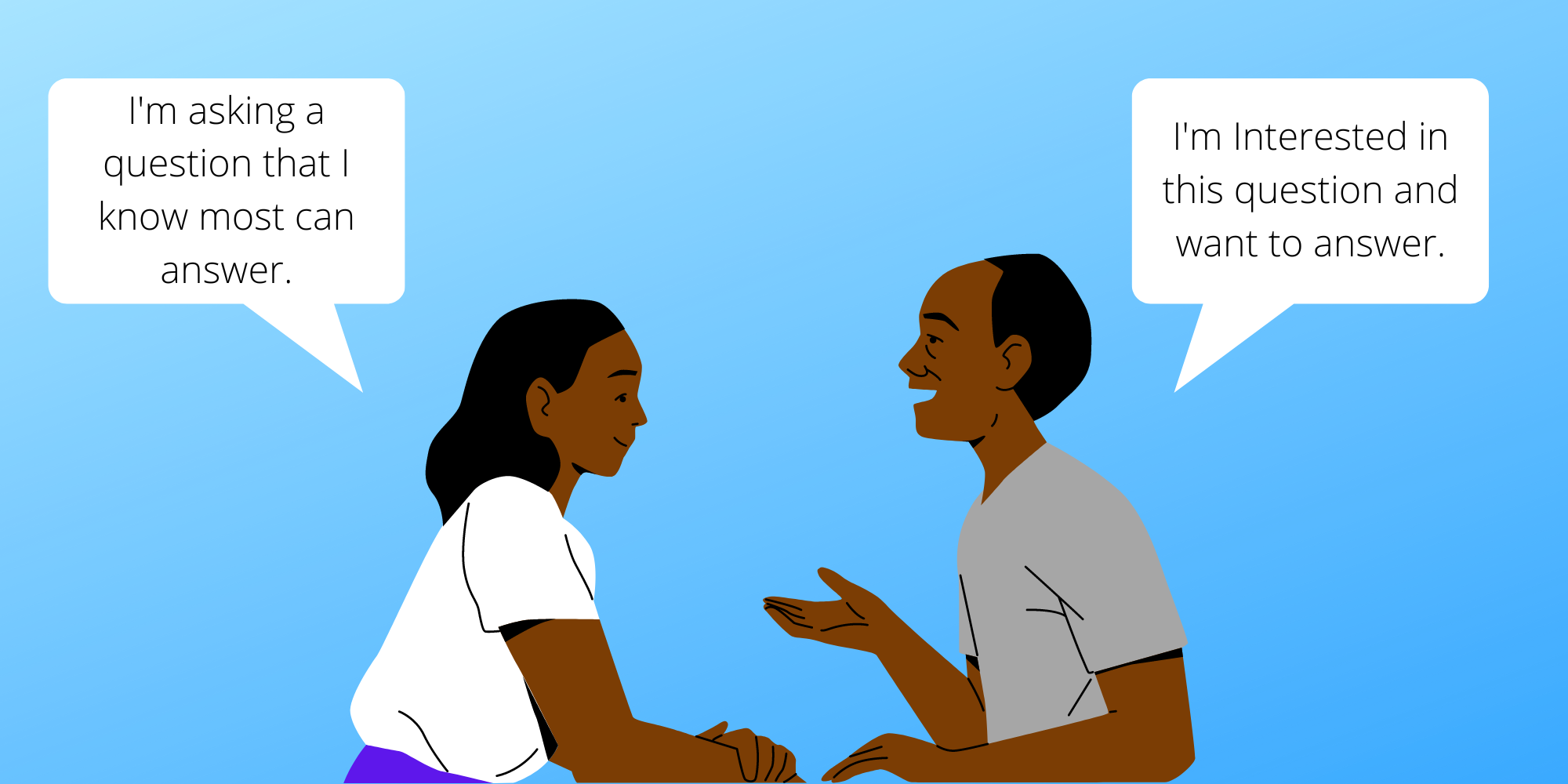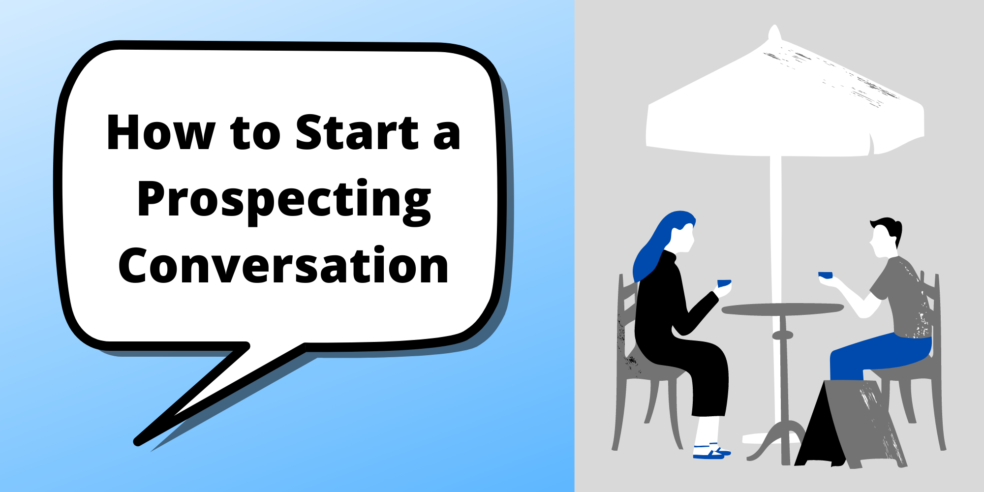Nothing creates pressure quite like starting a new outbound sales campaign for the first time. Not to worry, we’re here to help you start your scripts in a way that will lead to sales conversations!
At Speedwork, we value the conversation starter as a relationship-building device. Picture yourself on a Tinder date. All you know about this person is a profile image, maybe some information about their profession, and the short, “About Me” blurb on their page.
The function of a conversation starter in sales is similar to the first question one would ask on a date: the primary purpose is to learn about what the other person needs and build a relationship. That being the case, your conversation starter should also lay the framework for a pitch, reveal market insight to you, and help the prospect understand context and start investing time into you.
With this in mind, we have crafted a few guidelines to aid you along the way!

Make the Prospect Feel Like the Center of Attention.
In 2017, Donald Miller wrote a book called Building a StoryBrand, where he introduces the idea of treating one’s customer like the hero of a story. It is his philosophy that customers – or in our case, prospects – are only interested in a product, service, or solution that caters to their perspective.
Miller explains that “as a brand, it’s important to define something your customer wants, because as soon as we define something our customer wants, we posit a story question in the mind of the customer: Can this brand really help me get what I want” (46).
This means that your branding, emails, and even conversation starters should be intentional about centering your prospects as the main characters in the conversation. Form your questions in such a way that both anticipates a need, yet gives them the space to tell you exactly what that need is.
Here are a couple examples that do this well:
I’m always curious to ask, how do you currently handle your UI/UX design?
Just wondering, are you looking for new real estate investment opportunities at the moment?
“Have you ever had an employee who’s really talented, but just doesn’t seem to fit in?”
A Simple Ask is Key
The next piece of advice is that your prospect should not need to have a PhD in linguistics in order to decipher your question.
Too many words in a question often break the flow of the conversation and distract from your goal. Long sentences also lead to confusion, and confusion does not engage strangers online. Because of the lack of attention people tend to exhibit online, what works at an in-person networking session won’t always work in the DMs. The last thing you want is for your prospects to take one look at your message, decide it’s too long or too difficult to answer, and close the message.
Instead, put the question on its own line. only have one question per message, and keep it simple!
Remember: every word counts!
Good Conversation Starters Have Direction, but They are Not Salesy
Imagine this: you’re a strapping young businessperson with a shiny list of prospects. Your company has just hired you to make cold calls the old fashioned way, but they also want you to spend at least 15 minutes on LinkedIn every morning and draw people in from there.
You can’t interrupt them, knock on their door, or show them a flashy image. What do you say that will get their attention, but not make them angry or think that you’re only there to sell? Have you ever connected with someone on LinkedIn and they spam you with messages right away? Yeah, that’s how people get blocked.
You want to guide the conversation forward, but avoid overly salesy language. (Don’t be like a used car salesman!) Good conversation starters come off as having genuine interest in the prospect and their situation. They will also ensure the prospect is thinking about their situation or need, which will make the pitch more likely to hit later.
We also know that your conversation starter shouldn’t be too long, and it should relate to the prospect’s anticipated needs. If you ask them something that’s too emotional, it’s easy to get off track. But you’re on the clock. You can’t afford to spend two hours with a stranger on LinkedIn; otherwise, your boss will scratch his head and wonder why you aren’t working.
Guided questions that can be responded to positively or negatively are a great tool that can allow you to connect about a topic, remain neutral, yet still appeal to a want or need. Just don’t be too direct.
We’re just knocking on the door at this point, not sneaking in through the window.
Stay Away from Jargon and Other Big Words
Another bit of advice from Donald Miller is that many brands “cause their customers to burn too many calories in an effort to understand their offer” (8). If you were going to a press conference with big, flashing lights, you would want to show off, but that’s not the case here.
We know you’re an expert in your field. You either excel at your service, provide something that no one else does, or you have just made a groundbreaking discovery. It’s only natural that you want to use the right words to describe your offer.
But sometimes, instead of “wowing” prospects, these words can alienate a large section of your audience. If the majority of people don’t understand it, then it’s probably not the right word. Using jargon or loaded questions also lets them know you’re up to something and not just interested in networking, so it’s important to speak their language, not yours.
Treat them like you’d treat anyone.
This doesn’t mean you have to write at a 5th grade level. But if you find your audience asking you too many clarifying questions, you might consider replacing a word or even getting a second opinion from someone not in your industry.
Ask Off the Cuff Questions!
The last piece of advice is that your prospect should not need to do any research, checking, or otherwise to be able to answer your questions. As mentioned before, conversation flow is important when reaching out to prospects, so you don’t want them to leave the chat.
Pretend you’re walking up to someone at a business networking event. What’s an easy question to get the conversation started in the right direction?
You want your prospects to eventually follow a call to action. When the time comes, we want them to take us up on our offer, so we need to build momentum. Your job is to interest them enough to listen to your pitch and hopefully to get them on a call with you after the next message.

How Can You Tell If You Have a Good Conversation Starter?
The best way to ensure you have a great conversation starter is to test it!
You can use our blog to guide you through writing your own, or you can just ask us to do it for you! At Speedwork, we not only include expertly crafted conversation starters as a part of your script copy, we also test and improve them in order to optimize your lead generation strategy!
Now that you can start a conversation, how about keeping it going?
Check out our guide about How to follow up with prospects on LinkedIn
